Furness
Bermuda Line, R.M.S. Monarch of
Use Google Chrome for this Web Page to load perfectly!
Please Note: All ssMaritime and other related maritime
sites are 100% non-commercial and privately owned, thus ssmaritime is NOT
associated with any shipping company or any other organisation! Although the
author has worked and been involved in the passenger shipping industry for well
over 60 years, but due to his old age and poor health, he was forced to retire.
Yet, he has completed well over 1,360 Classic Liners, Passenger-Cargo Liners as
well as humble converted C3 converted Migrant Liners, which has transported
countless thousands folk to the new world, as well on vacations’. I trust
the features online will continue to provide Classic Liner and Ship enthusiasts
both the information they are seeking, but more so provide a great deal of
pleasure and relive many happy memories!
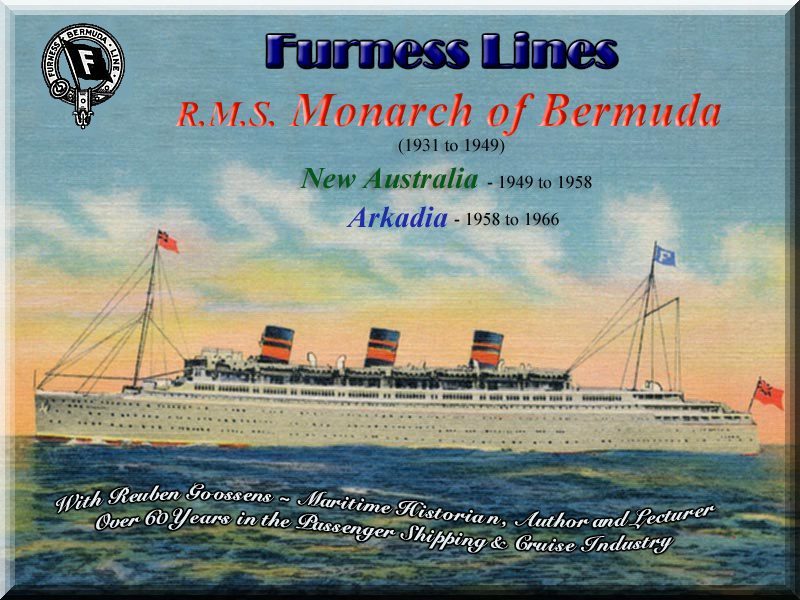
Please Note: Postcards, photographs & other images are either from the author’s private collection.
A special thank to
the three ssmaritime supporters for sending their most welcome Photos &
images
Page One - R.M.S. Monarch of
This feature will cover two pages; Page One
will cover this fine ship as built in 1931, as well as her days as a troopship.
Page Two has her in her two final guises; the British migrant liner the S.S. New
Introduction:
The “Furness, Withy & Co
Ltd” was awarded the Mail contract for the
The Bermuda service, but
initially from
The “Furness Bermuda Line”
commenced their service with the 1904 built, 435 ft long “Quebec
Steamship Company’s”
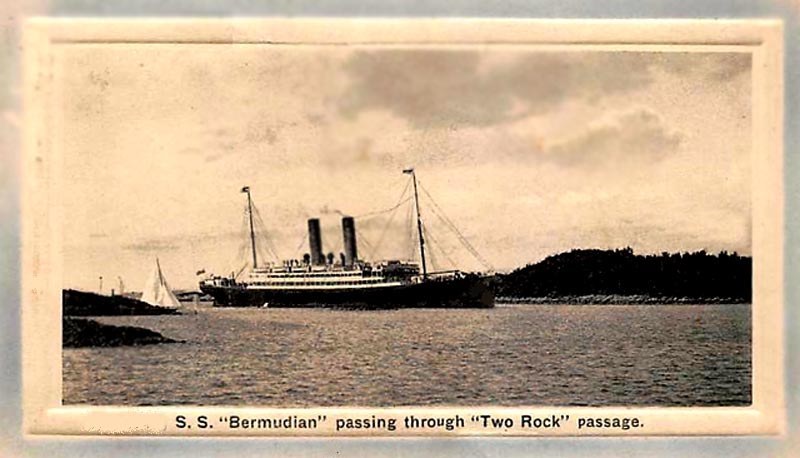
A postcard featuring the S.S. Bermudian
It rapidly became well known that the “Furness Bermuda Line” was a huge success, and during it first year of operation they carried an amazing 22,000 passengers.
A contract was signed in 1930 for a new ship, the 22,424 GRT three funnelled liner the “Monarch of Bermuda”, and this is her story.
On March 17, 1930 the “Furness Bermuda
Line” ordered two new liners to be built by “Vickers Armstrong
Ltd”,
The first ship the Monarch of
The “Monarch of Bermuda” was officially named and launched on March 17, 1931, and she was completed in November of that year. This 22,424 GRT (Gross Registered Ton) liner was powered by steam turbo-electric propulsion, driving 4 screws which allowed her to operate at a respectable service speed of 19.5 knots. Externally she has 3 funnels, with the aft funnel being a dummy; and she had 2 masts and featured a cruiser stern. She had 16 lifeboats more than sufficient for her relatively small number of 830 First Class passengers. She offered the best of accommodations, although if ever required there were some 32 berths that could be used for a Second Class.
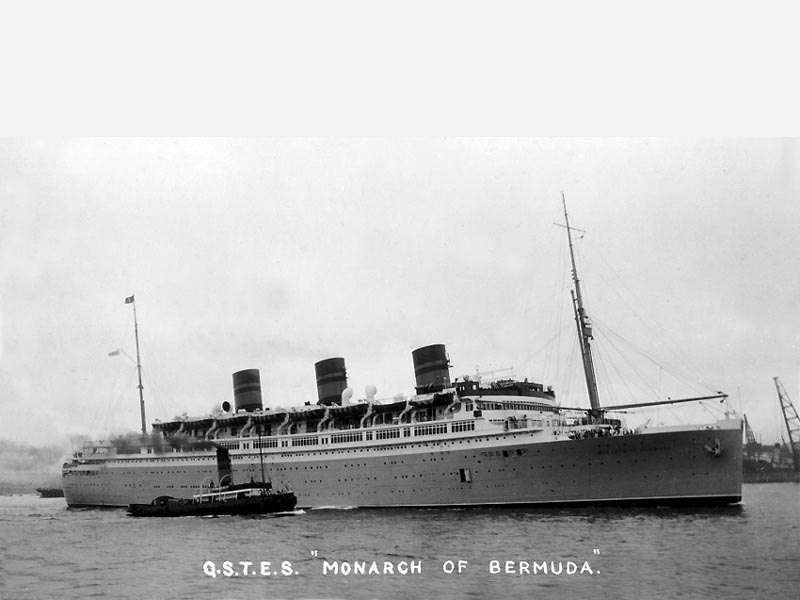
The fine view of
the (Q.S.T.E.S.) - R.M.S. Monarch of
Their three funnels provided these ships with an
impressive exterior appearance, yet compared to the many Trans-Atlantic Liners
they did not have that long sleek graceful look. The service from
Her Construction:
Vickers-Armstrongs built the
“Monarch of Bermuda” at its shipyard in
As built, “Monarch of
Bermuda” was 22,424 GRT (Gross Registered Tons) and offered
luxury berths for 830 passengers and her holds had a capacity for refrigerated
cargo as well as a large horse stalls forward on C Deck.
The R.M.S. Monarch of
The Loss of M.S.
Bermuda in 1931:
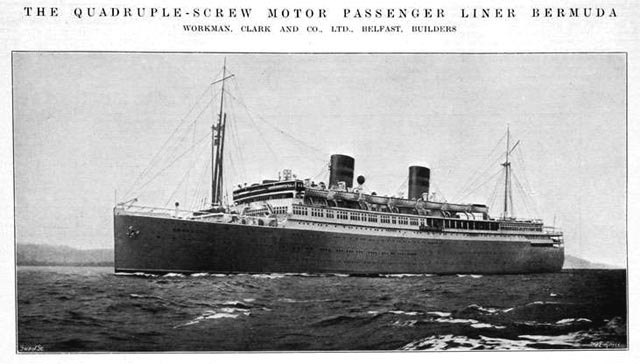
The 1927 completed M.V. Bermuda was berthed at
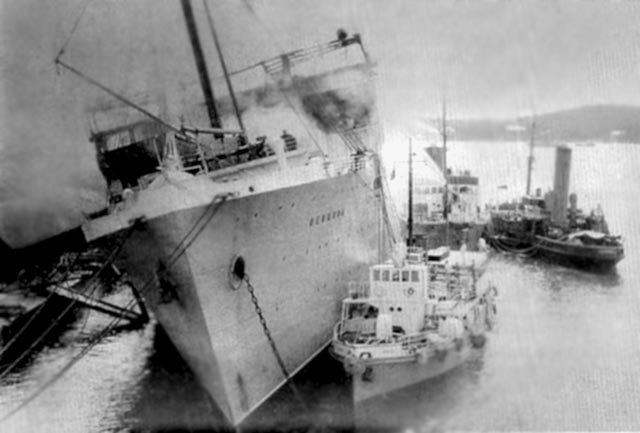
The M.V. Bermuda
is seen here at
Having been salvaged she was sent to her
builders in
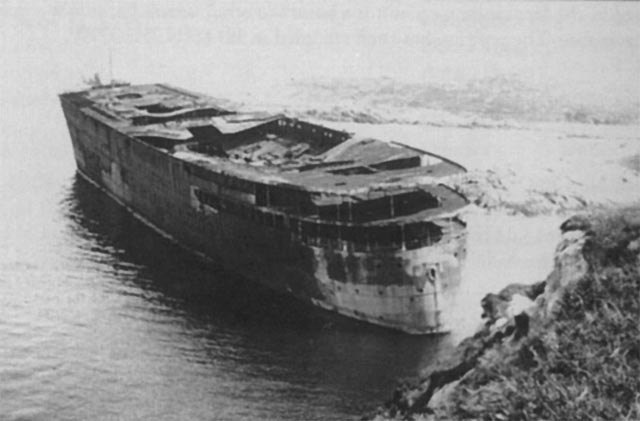
A sad sight of
what was a once beautiful liner
Furness Bermuda

The “Monarch of
In 1933 Vickers-Armstrongs completed
her sister ship, the 22,575 GRT Queen of
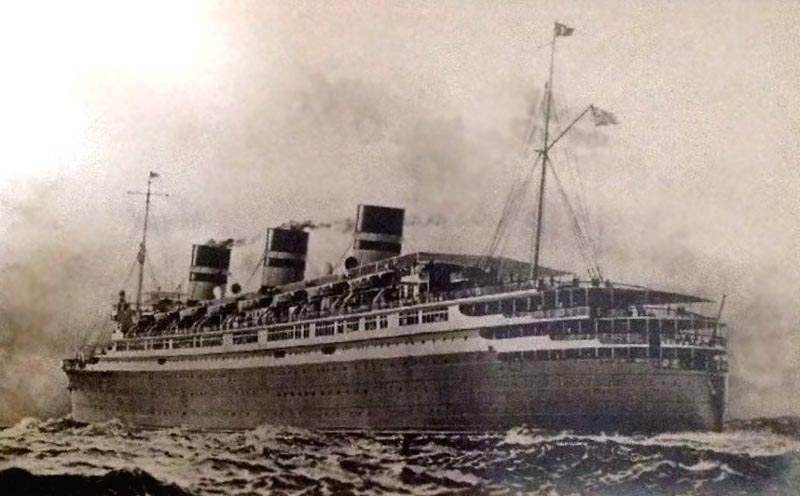
A view of the
R.M.S. Monarch of
The turbo-electric propulsion liner, R.M.S
Monarch of Bermuda departed on her maiden voyage from
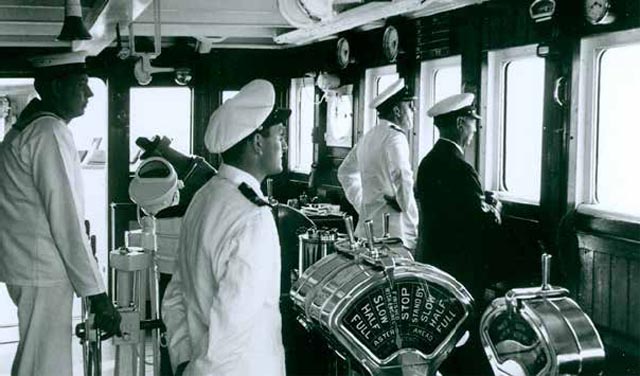
It was during her maiden voyage that she set a
brand new record for the voyage to
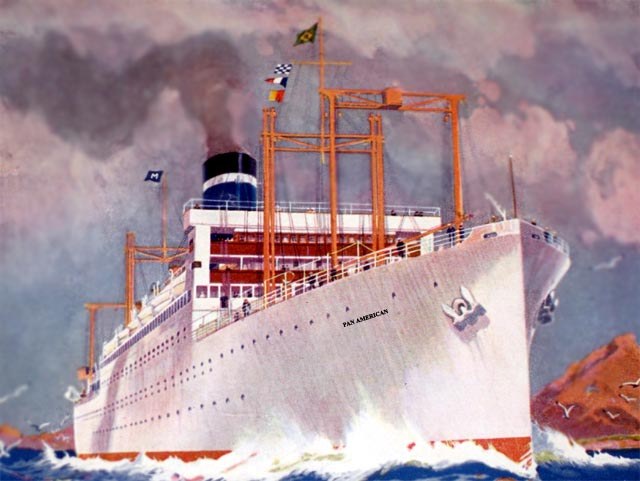
S.S. Pan American
The “Monarch of Bermuda” and her
sister R.M.S Queen of
For interest, as a quadruple-screw electric
ship, the “Monarch of Bermuda” was an immediate success.
But changes were made for her later sister, the “Queen of
Bermuda”. The differences between the two ships would be as follows,
as it was decided to eliminate the indoor swimming pool on lower deck. The
reason for the indoor pool was originally as follows; during the winter the
ship leaves
Onboard the “Monarch of Bermuda” all available space was taken up by passenger accommodation. The portion of the ship left over was for its propelling machinery was therefore small. That was another reason for the choice made of her electric propulsion, which could be so conveniently and flexibly arranged in those parts not required for the passenger accommodation. There was a need for as much space as possible for her passenger accommodation and facilities, that the indoor swimming pool was arranged in such a way that it occupied the space that on the next ship the “Queen of Bermuda” was the auxiliary engine-room.
Both the “Monarch of Bermuda” and
the “Queen of Bermuda” were luxury liners and they were certainly
capable of sailing around the world in comfort. However, they were employed on
a short distance service between
Interiors:
Below are a few interior and outdoor photographs, which were sourced from several brochures. I am sorry, not all of the images are of the same high quality.
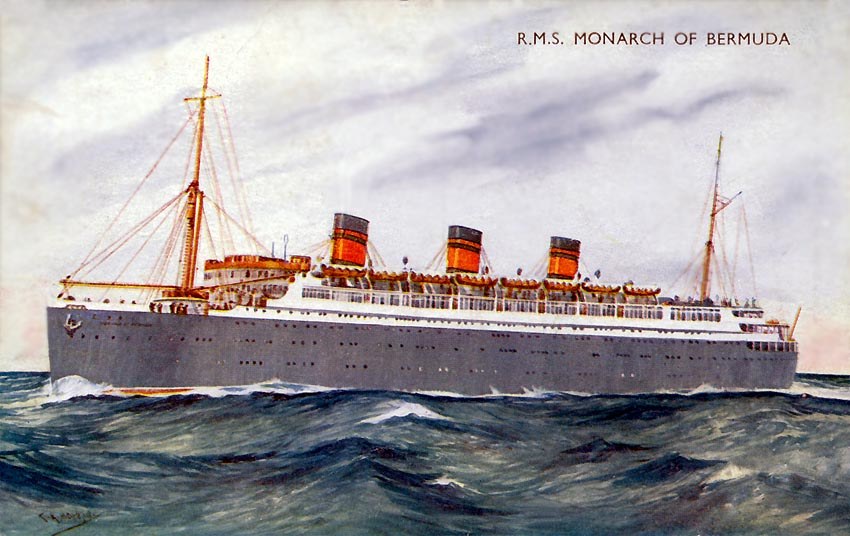
Postcard of the
R.M.S. Queen of
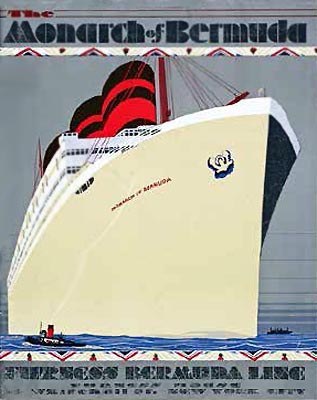
One of the
Brochure covers
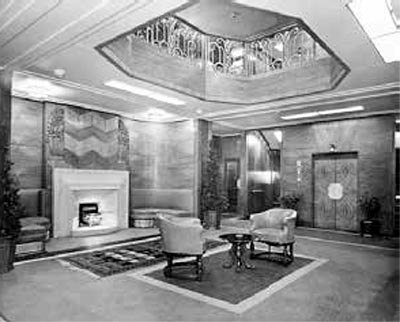
This is the Main
Entrance Hall on A Deck
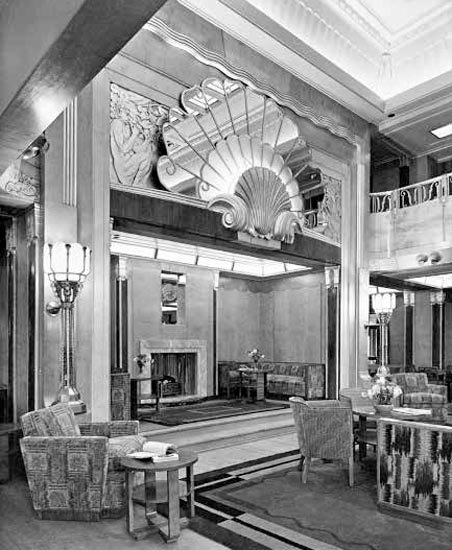
The glamorous
multi level Main Lounge
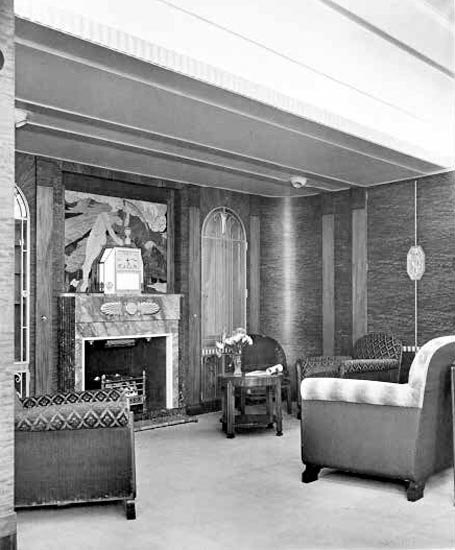
The elegant
Library and Reading Room
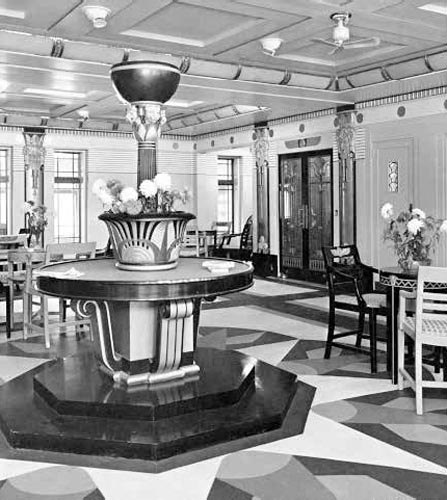
The staggeringly
beautiful Verandah Café
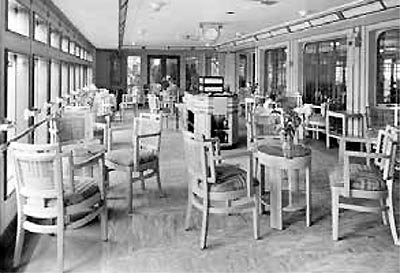
The Verandah Café,
indoor (aft) “wing Café
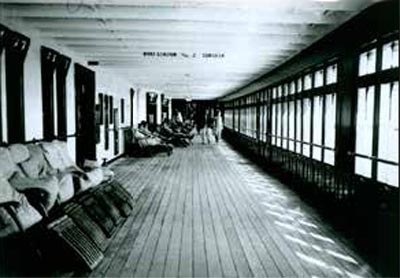
Passengers
enjoying the spacious Promenade Deck
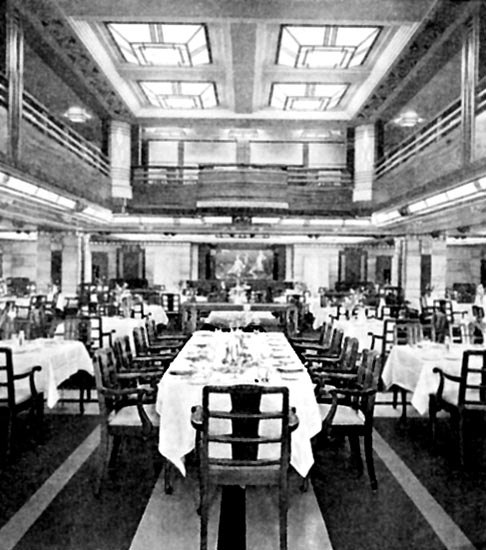
The Restaurant
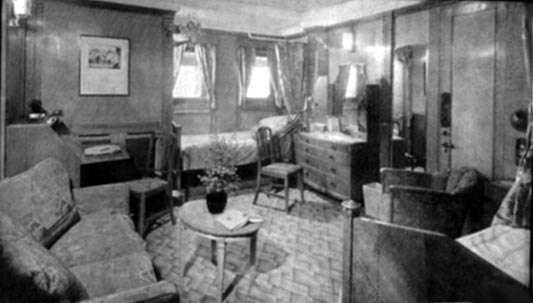
One of the Suites

A Deluxe Stateroom
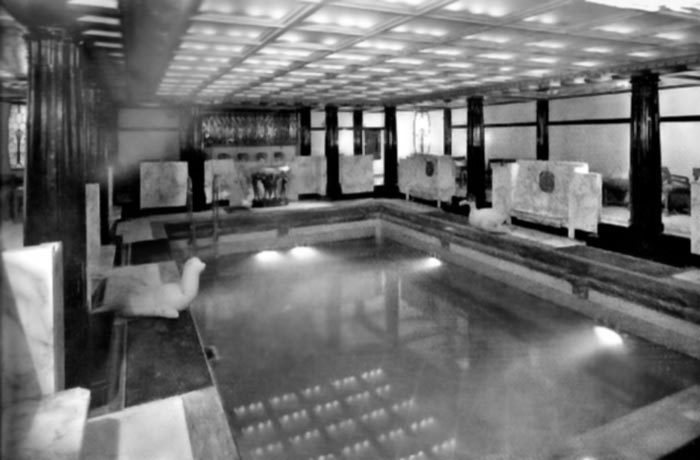
The magnificent indoor pool has marble benches along the side and a bar along the forward wall
The ceiling was golden with some 252 lights, whilst the pool had eight large lights around the sides under water
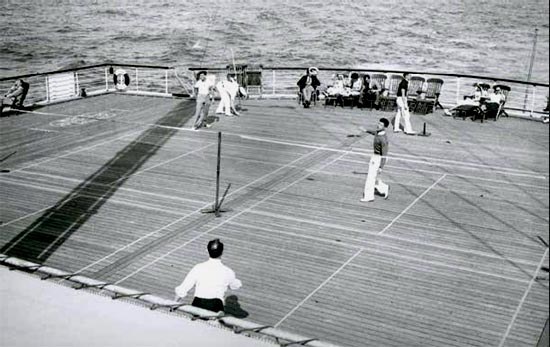
Ample deck space
for sports
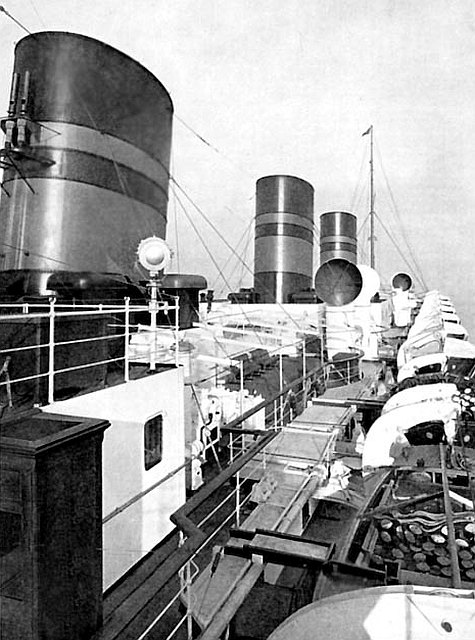
Her three stately
red and black funnels
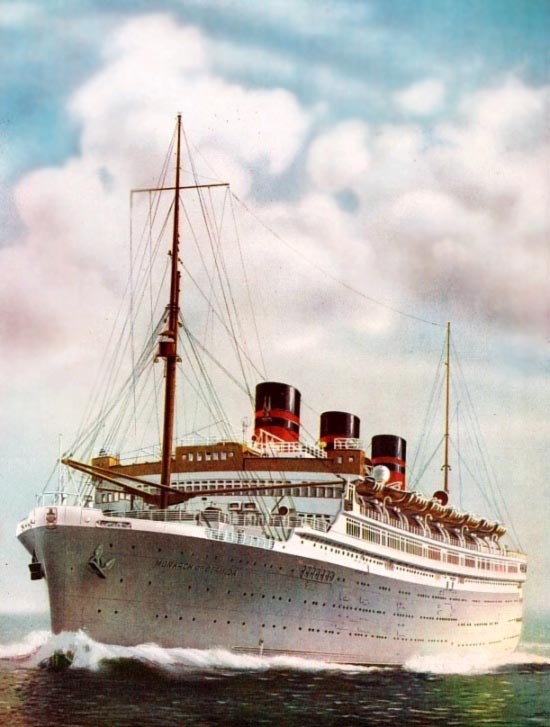
With this bow image she is seen here at sea
A Furness Lines image, but by an unknown artist
The S.S. Morro
Castle
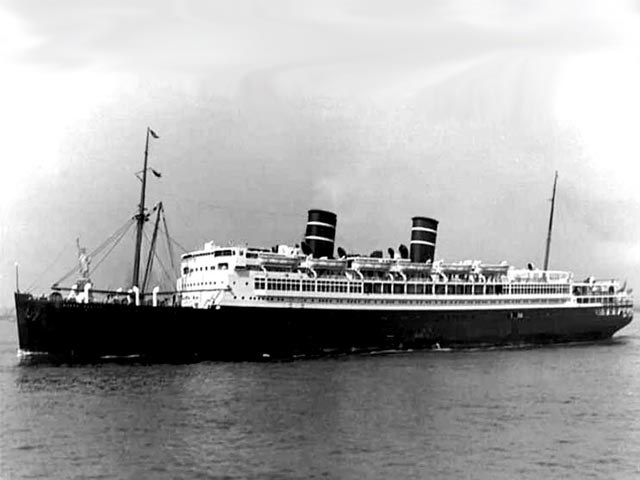
The “
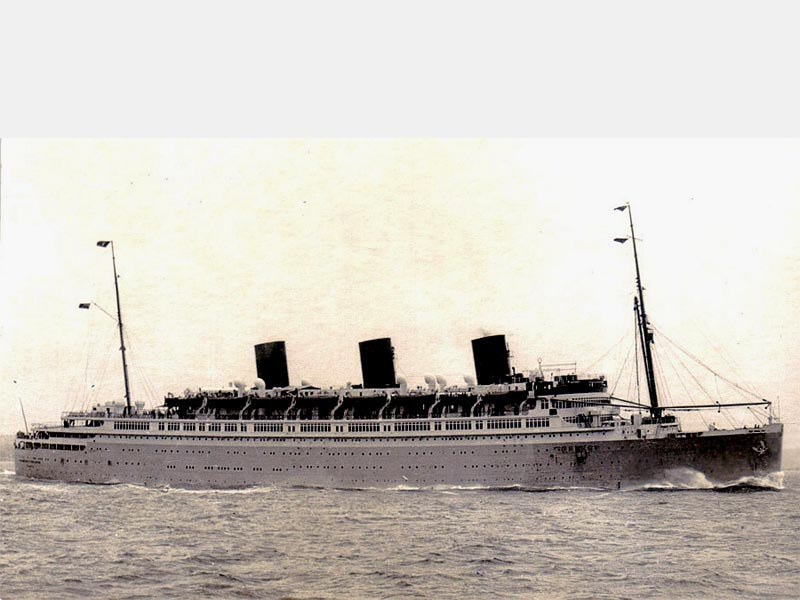
Heading at full
speed to the "
At that time the “Monarch of
Bermuda” was on her voyage and she received an SOS call from the
“Morro Castle”, which was on fire off the coast of
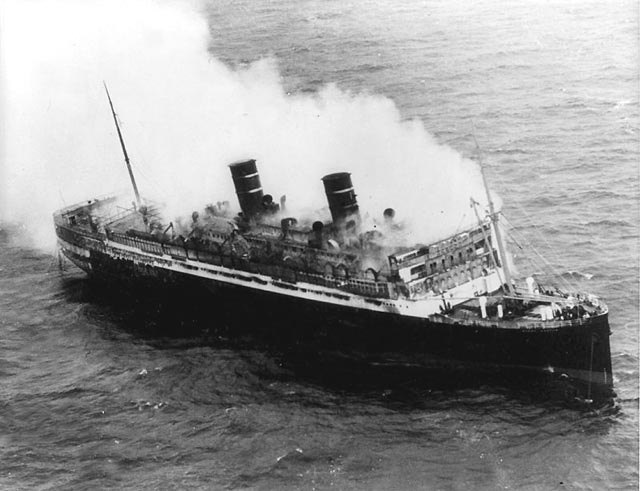
Above & below: two tragic views of the


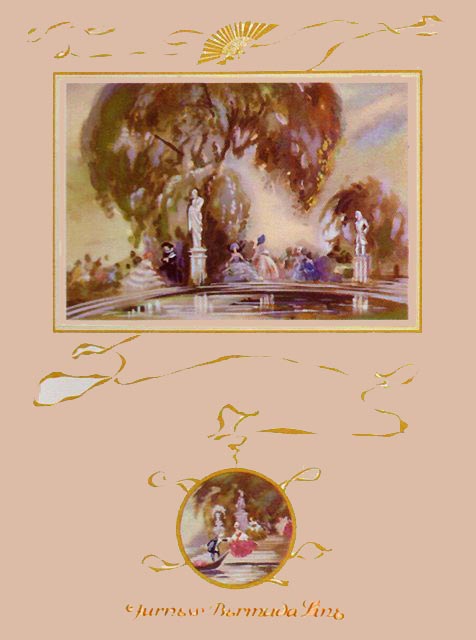
The cuisine on any “Furness Bermuda Line” liner was simply sublime
and they were well known for their beautiful artistic Menu covers
Monarch of Bermuda
Below we see the Monarch of
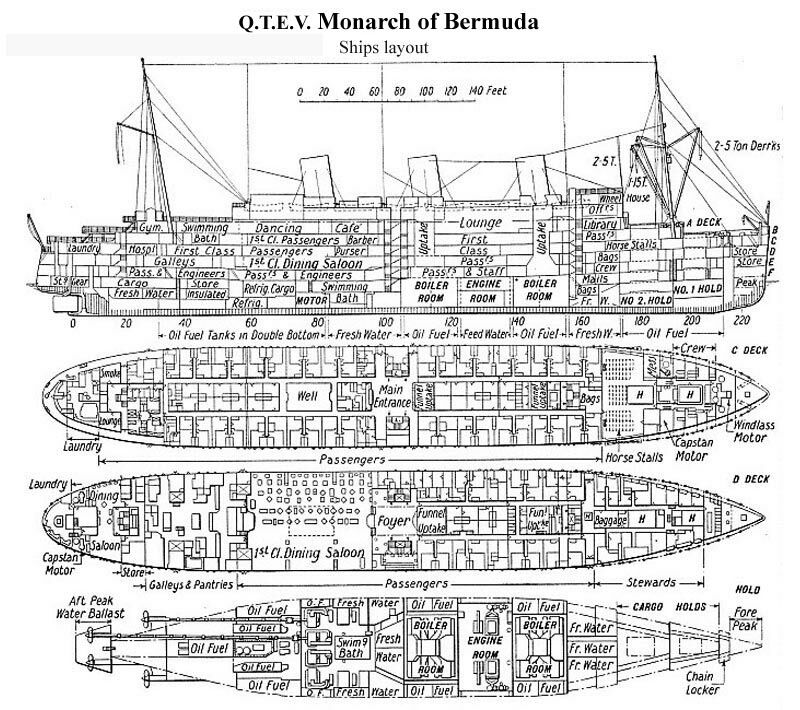
**************
Troopship:
In November 1939, both ships were
requisitioned for war duties by the British Government. “Monarch of
Having arrived in the
On April 14, 1940 she participated in the
landing of British forces at Narvik in
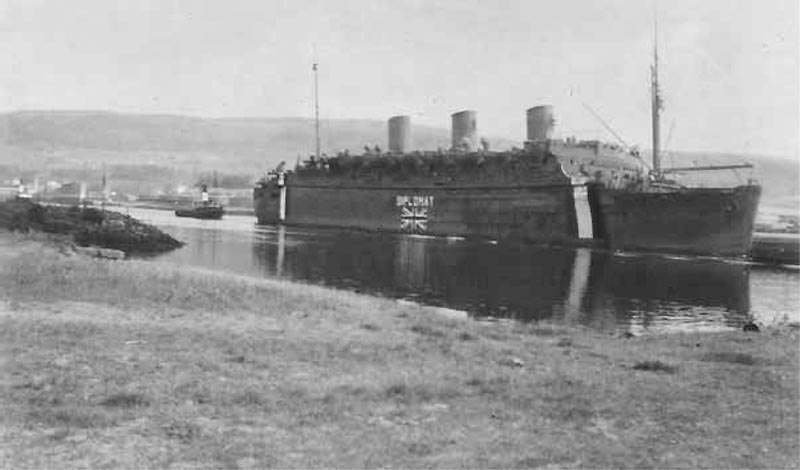
The Monarch of
In July 1940 she sailed in convoy from
In 1941 it was decided to increase her trooping capacity to 3,250 troops, and then in August 1942 she received modifications in order to carry landing craft.
During May 5 to 7, 1942 she participated in
the Allied landings against the “Vichy French” in
On November 27, 1942, she was in Liverpool
embarking troops for the action against “Vichy French” arriving in
Then on July 3, 1943, the Monarch of Bermuda
boarded troops destined for action in “Operation Husky” which was
the Allied invasion of
In 1946 she was used to transport Canadian War
Brides across the
Return
to Civilian Duties:
For on May 24, 1947, fire broke out onboard
and she was extensively gutted, and this once fine ship was duly declared a
total loss and she was towed to
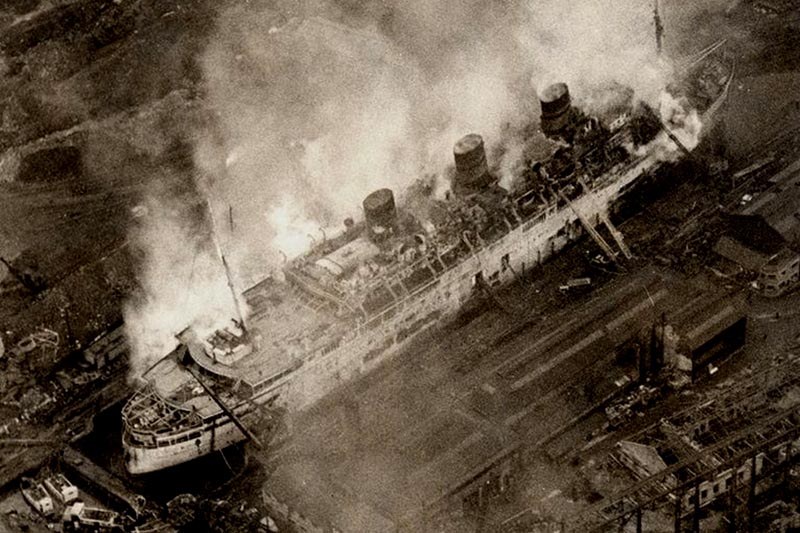
She is seen on
fire at the
However, due to the losses of so many liners during the War, there was an extreme shortage of passenger liners and thus the “Monarch of Bermuda” was placed on the market. The Argentine government put in a bid for her, but this was rejected by the British Government. They found that her engines were still be able operated, thus she was taken out for trials, and indeed her engines were in perfect order.
The “New Australia” and
“Arkadia” will be covered on Page Two (the link is below the
specifications).
Ship as built: R.M.S. Monarch of
Type of ship: Passenger & Refrigerated Cargo Ship
Builder: Vickers-Armstrongs
Ltd”,
Yard; “High
Launched: March 17, 1931.
Delivered: November 1931.
Maiden Voyage: November 28, 1931.
Registration N°: 162650.
Code letters: LHJD - 1931 to 1933.
Call sign: VJQM - 1934 to 1949.
Names: Monarch of
. New
. Arkadia - 1958 to 1966.
Owners: Furness, Withy & Co Ltd - 1931 - 1949
. Ministry of Transport - 1949 to 1958.
. Arcadia Steamship Corporation / the Greek Line - 1958 to 1966.
Operators:
.
. Greek
Line - 1958 to 1966.
Launched: March 17, 1931.
Delivered: November 1931.
Tonnage: 22,424 GRT, 12,876 NRT - 1931 to 1949.
. 20,256 GRT - 1949 to 1961.
. 20,259 GRT - 1961 to 1966.
Length: 553.2 ft - 168.6 m (1931–58).
. 590 ft -180 m (1958–66).
Beam: 76.7 ft - 23.4 m.
Draught: 27.1 ft - 8.26 m.
Installed power: 4,411 NHP
Propulsion: Two × Steam Turbines, Electric Generators, plus Electric Motors.
Built
by: Fraser &
Chalmers, Erith (Turbines) & General Electric Co Ltd,
Propellers: 4 Screws.
Speed: 19.5 knots, 19.85 knots maximum.
Accommodations: 830 First Class only - 1931 to 1939.
Troops: 1,383 - 1941.
. 3,250 - 1942.
. 4,050 to 5,550 max - 1942.
. 1,600 One Class - 1949 to 1958.
. 150 First Class, 1,150 Tourist Class - 1958 to 1961.
. 50 First Class, 1,337 Tourist Class - 1961 to 1966.
Crew: 456 - 1931 to 1939.
Fitted
with: Direction finding
equipment, echo sounding equipment, gyrocompass & submarine signalling
equipment.
Remembering the luxurious …
R.M.S.
Monarch & Queen of Bermuda
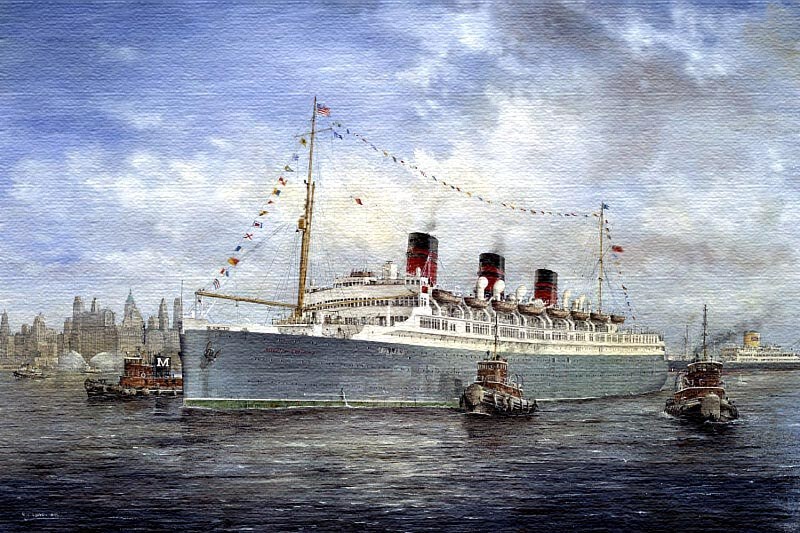
A fine painting representing the two ultra luxurious sisters
**************
I watched them come, I watched
them go and I watched them die.”
Featuring over 1,362 Classic Passenger Liners, Passenger-Cargo Liners & Classic Cruise Ships!
Or ENTER HERE
For interest: Sadly an email service to ssMaritime is no
longer available, due to the author’s old age and chronic illness as well
as being disabled, etc. In the past ssMaritime received well over 120 emails
per day, but
**************
ssMaritime.com & ssMaritime.net
The Author has been in Passenger Shipping
& the Cruise Industry for well over 60 years
In addition he was the founder of
“Save the Classic Liners Campaign” in 1990.
Please Note: ssmaritime and associated sites are 100% non-commercial and the
author seeks no funding or favours of any
shape or form, never have and never will!
Photographs on ssmaritime and associate pages are by; the author or from the author’s private collection. In
addition there are some images that have been provided by Shipping Companies
and private photographers or collectors. Credit is given to all contributors.
However, there are some photographs provided to me without details regarding
the photographer/owner concerned.
This notice covers all pages; although, and I have done my best to ensure that all photographs
are duly credited and that this notice is displaced on each page, that is, when
a page is updated!
ssMaritime is owned
& © Copyright by

